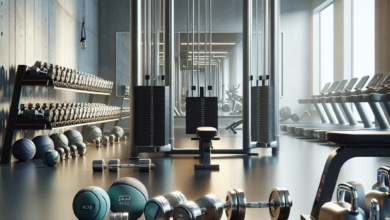How to Improve & Master Strict Pull-Ups

Pull-ups are prevalent in most training programs, and even if you’re starting your very first workout routine, you must include a few reps. It’s a wholesome exercise that works multiple muscles at once, and you don’t need special gym equipment to do some reps, just something to hang from.
If you’re out to strengthen and build your upper-body, be sure to make pull-ups part of your workout plan. Regular pull-up training not only raises your fitness level, but also challenges your muscles to improve how strong you feel.
Nevertheless, like any strength exercise, pull-ups are quite demanding, and you may not have the power to get your chin over the bar. It can be frustrating, especially if you’re trying it for the first time, but by learning a few tricks, you can avoid performing those drills that never yield.
Strict Pull-Ups
If you’ve been cheating a pull-up, you’re not alone. We like it the easy way, so doing a few wrongs when no one is watching serves it. Unfortunately, we are missing out on the gains, and, therefore, upgrading to strict pull-ups might save the day.
But what makes a strict pull-up?
A strict pull-up is a little more complicated and demanding than the one you’re used to. It involves moving the scapula towards the spine and engaging your core so that the torso remains neutral and the ribs stay low during the movement.
It isn’t about lifting your chest to the bar to shorten your range of motion. Instead, a strict pull-up aims at keeping the ribs down, as you pull your body towards the bar in full range motion for maximum core engagement.
Unlike a strict pull-up, with an improper pull-up, the ribs lift as you move downwards, away from the bar. Here, the core isn’t activated effectively, as the pull-up relies on a slight kip to begin the movement. And to complete the motion, it heavily relies on the biceps, meaning it doesn’t engage the core exhaustively. With this kind of pull-up, you’ll not make any progress. So if you’re guilty of this, you better change how you do things.

Common Challenges With Pull-Ups
While you could be trying so hard to get it right with your pull-ups, a few mistakes may bar you from reaching your goal. Unless you identify and work on these errors, you’re far from achieving a perfect pull-up.
Here are common mistakes to watch out for:
- Fixing your eyes on the bar: It causes you to move your body away from the bar.
- Staying straight: It forces you to move your ribs towards the bar.
- Not engaging your shoulders at the start: This puts unnecessary strain on your joints and muscles, causing you to flail around on the bar.
- Not activating your lats enough: Since your lats need activation to feel strong, your body won’t be able to cope with the demands of a strict pull-up.
How to Achieve a Strict Pull-Up
It’s possible to fix these common pull-up challenges and consequently increase your reps. Here’s how to go about it:
Practice Core-Engaging Exercises
Most people can only manage a few pull-up reps because their cores are either weak or aren’t appropriately activated. As such, they struggle to keep their ribs down during the movements, resulting in an improper pull-up. If you’re experiencing this problem, consider making these exercises part of your daily workout routine.
Hollow Body Hold
The hollow body hold is a beginner-friendly workout that strengthens your core. It works the muscles in front of your body, not forgetting the shoulders and back muscles. Since you can modify the move to suit your fitness level, it’s not a risky exercise. To get the most out of it, ensure you keep the lower part of your back on the floor while performing the move.
Planking
The plank is a simple core and abdominal exercise that anyone can do. It works your core and the muscles in front of your body, such as the abs. It also engages the muscles running from the pelvis down along the spine and up the shoulder girdle.
For a stable and robust core, be sure to include this move in your daily workout routine. When doing the plank, don’t arch the body, as the weight will go to your arms rather than the core. Also, ensure you keep your shoulders down and wide.
Practice Lat Activation and Scapula Retraction
If you rely too much on your biceps while performing a pull-up, you won’t get the move right. To avoid this, be sure to activate your lats properly at the start. Also, try to move the scapula towards the spine more often. It ensures your back muscles are fully engaged, which is suitable for a strict pull-up.
Here are workouts to train your back muscles:
Dumbbell Pull-Over
While this move is popular with bodybuilders, it can prepare your body for a strict pull-up. Since it stretches the lats and triceps, it improves your shoulders’ mobility, which is essential in scapula traction and lat activation. It also strengthens your back muscles to increase your endurance when performing a strict pull-up.

Tips to Increase Your Pull-Up Reps
- To perfect your pull-up, be sure to train more often. Try to do a strict pull-up three times a week.
- Make sure you perform this exercise before any other move. It increases your chances of learning it and becoming a pro.
- Keep the reps few for the start. Your muscles need time to adjust. Doing many reps at the beginning will encourage bad habits that lead to improper pull-up.
- Take enough rest between strength sets.
- Practice exercises that strengthen your core and shoulder muscles to increase your endurance during a strict pull-up.
Whether you want to increase your numbers or you’re gaining strength, ensure you do your pull-up right. It’s the only way to maximize the gains.



